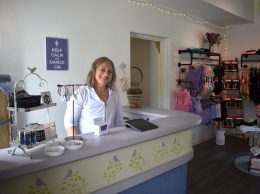Central Coast small businesses stack up well against rest of Golden State
 When it comes to the environment for small businesses on the Central Coast, you might say we’re facing a good news/bad news situation.
When it comes to the environment for small businesses on the Central Coast, you might say we’re facing a good news/bad news situation.
First the bad news. A survey of 6,022 small companies released by the Ewing Marion Kauffman Foundation and Thumbtack.com gives California some of the worst grades in the country for business climate.
Now the good news. The Central Coast finished at the top of California’s regional rankings, with the Bay Area a very close second. The bottom line is that our region ranks about average on a national basis when it comes to help that’s available to small and very small businesses.
Thumbtack.com is a website based in San Francisco that has 275,000 registered small businesses, which it matches to job bids ranging from music tutoring to carpentry to wedding photography. Founder Sander Daniels said he came up with the idea of the survey because he “wanted to be a voice” for the smallest of companies.
The survey covered 15 different topics, ranging from the environment to zoning to the respondent’s optimism about the future.
Ninety percent of those who responded to the survey have five or fewer employees. “These were really, really small guys. It’s hard to get access to this demographic,” he told me in a phone interview.
In the survey, California got failing grades in six categories, including regulations, health and safety rules, employment and hiring, the tax code and licensing. It ranked 41st overall but came in slightly better, at 35th, in the optimism about the future category.
At the bottom of the heap was Rhode Island, followed by Vermont. New York also got a relatively low ranking, while Idaho and perennial survey winner Texas were at the top of the list.
When it comes to the Central Coast, which Thumbtack.com defines as Ventura, Santa Barbara, San Luis Obispo and Monterey counties, the region ranked very high for accessibility of documentation — meaning that licensing and other forms were easy to find and easy to file. Employment costs were also a plus, which Daniels interpreted to mean that relative to the Bay Area or Los Angeles, salaries were less expensive in our four-county region.
Factors that tended to rank our region and the Bay Area higher than the state’s other regions were networking opportunities and low-cost training available from the SBA, SCORE, chambers of commerce and Small Business Development Centers.
California as a whole didn’t fare very well, “but the Bay Area and the Central Coast were really standout regions,” Daniels said. Among the nine California regions broken down in the survey, Los Angeles and Orange County were in the middle of the pack. The Inland Empire and the Central Valley were at the bottom.
Looking at national data, Daniels said a surprising finding was that small-business owners worried twice as much about licensing rules and difficulties with local business regulations as they did about tax rates.
Common complaints were about a lack of consistent standards and time delays in getting licenses to provide services such as pet sitting.
Based in Missouri, the Kauffman Foundation produces groundbreaking work on entrepreneurs and entrepreneurship. It partnered with Thumbtack.com to help develop the survey questions and crunch numbers once responses came in.
Results were drawn from Thumbtack.com participating companies.
It seemed particularly appropriate to write up this survey as the Business Times and the U.S. Small Business Administration are gearing up for our 10th annual Spirit of Small Business Awards. You can nominate your favorite company at www.pacbiztimes.com and we’ll be keeping an eye out for future research from the folks at Thumbtack.com.
• Contact Editor Henry Dubroff at [email protected].












